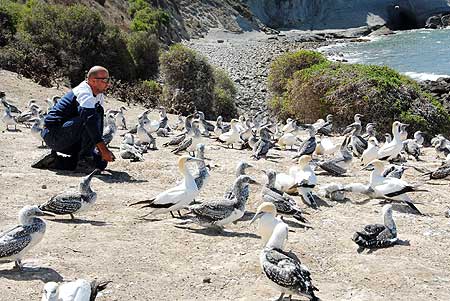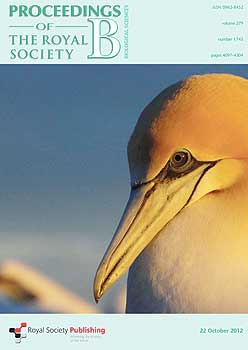Gannet vision - split-second fit for air and water
Wednesday 19 September 2012, 12:24PM
543 views


Massey University research on the extraordinary optical powers of the gannet have earned front cover status in the latest Proceedings of the Royal Society Biological Sciences journal published in the UK.
The research led by doctoral candidate Gabriel Machovsky-Capuska, a biologist at the Institute of Natural Sciences’ at the Albany campus, is the first to reveal the anatomical and physiological mechanisms enabling gannets to adjust their vision in an instant between air and water as they target and dive for fish.
Mr Machovsky-Capuska has captured in still photos how the gannet’s eye transforms its vision between aerial and aquatic environments – critical to its survival. The findings are part of his broader study on the foraging and feeding behaviour of the Australasian gannet Morus serrator, the distinctively sleek, yellow-throated seabird with blue-rimmed eyes found in 29 colonies around New Zealand’s coast.
While other species – such as penguins and seals – can also adapt their vision between air and water, gannets are unique in terms of the speed with which the lens of the eye changes from oval to spherical to mitigate light refraction the instant they touch the water.
“Gannets are able to make this switch between air and water in 80-120 milliseconds,” says Mr Machovsky-Capuska. “They are able to see in environments that are physically and chemically completely different.”
Measuring this split-second, finely tuned physiological change was a massive logistical challenge, one that attracted academic interest and assistance from afar. He worked on the project with international collaborator Professor Gadi Katzir, a biologist from the University of Haifa, as well as his supervisor Professor David Raubenheimer, a nutritional ecologist from Massey University.
The researchers set up an elaborate experiment near a well-known gannet colony at Cape Kidnappers on New Zealand’s east coast, near Napier.
They used a range of highly sophisticated photographic devices, including infrared, photorefraction and underwater videography, to film gannets as they entered the water in an enclosure.
Mr Machovsky-Capuska says his findings could have wider conservation implications, with the gannet’s optical function serving as a “bio-indicator” of environmental changes.
“If gannets can’t see in order to hunt and feed because the water is murky from pollution, this could signal problems not only for the survival of gannets, but for other marine species as well,” he says.
Related articles